‘Not just an image-building project.’ What Lukashenko expects from the motorcycle factory
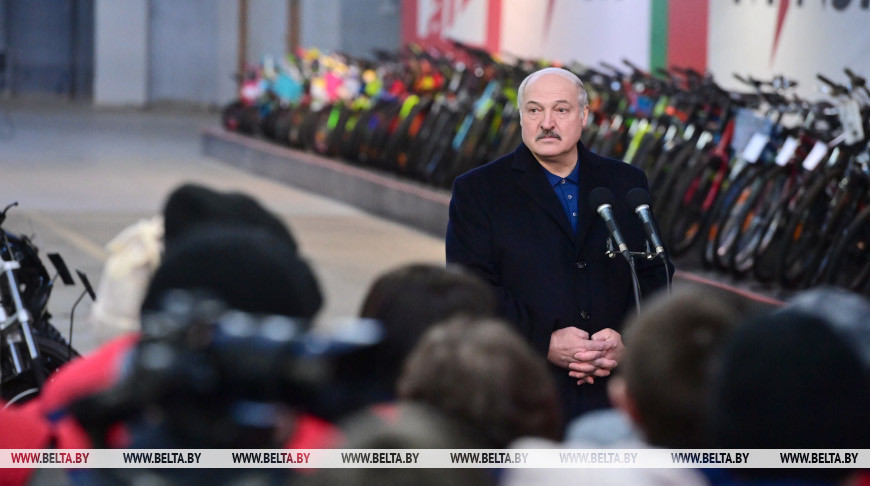
The future of the factory was decided in 2021. By that time, it had already become clear that the premises were too big for the motorcycle factory, which was hardly a thriving business. The land plot in the city center is “a gold mine” for housing developers. But the president's demand was ironclad: no residential development. Only the production facilities of the Minsk City Technopark. In a new episode of BelTA's YouTube project “After the Fact: Lukashenko’s Decisions ” we will tell you what gift Lukashenko will not give to the state and keep for himself. What preferences does residency in a technopark entail? Why does the president call localization the most important issue?
When did the motorcycle and bicycle factory built in Minsk?
Construction of the motorcycle and bicycle factory in Minsk began in 1945. The first bicycles rolled off the assembly line a couple of years later. They were in high demand. By 1950 the factory hitthe first 100,000 milestone. A year later, the plant began to produce motorcycles. The legendary MINSK bikes were rapidly gaining popularity in the USSR and beyond. Bike enthusiasts set up fan clubs called “Minskach”, the nickname of the two-wheeled dream of all Soviet boys. But then came the 1990s and the factory had it hard. Nina Mikhalitsyna remembers the time well. She came to work at the factory in 1986.
“At first things were good as the factory was owned by the state. Then private business came and everything fell apart. Just like everywhere else in the 1990s. We faced all sorts of difficulties: there were no wages, no work. But gradually things have been put back on track, thank God. We have jobs and work,” said Nina Mikhalitsyna, mechanical assembly fitter, assembly line forewoman.

Now Nina Mikhalitsyna and her colleagues work in a bright and well-maintained shop with modern machines and a new conveyor. This is the result of large-scale modernization.
“Earlier we produced 2 or 3 types of bicycles. Now we manufacture about 120 different modifications of bicycles. We produce about 14 models of motorcycles, quad bikes, scooters, electric bicycles. Our motto is quality,” Nina Mikhalitsyna said.
“These are unacceptable conditions for work. What are the plans for this site? The Minsk technopark will be based here. This site will also host the main production of the motorcycle factory. We will set up the park on the premises of the third building. It will be the most advanced enterprise where you will be working to double the production of vehicles within the next five years. We will keep this production site in the center of the city, but it will be a clean site. There will be no casting manufacture, no petroleum products here. This technopark will be a purely manufacturing site. No mediators and even no retailers. Except for export specialists,” Aleksandr Lukashenko said during a visit to the factory in March 2021.
What did Lukashenko expect from the motorcycle factory?
The factory looked different in 2021. While visiting the factory, the president instructed to create conditions for maximum localization. Aleksandr Lukashenko noted that the Belarusian manufacturer holds about a third of the domestic bicycle market. He instructed to increase the share to 50-60% over the next five years.
“In this five-year period we must build an exemplary production facility on this site. MotoVelo Plant will remain one of Belarus' most recognizable brands! We must put every effort in creating a good production facility,” the president said.
One of the main demands of the president was to use domestic component parts to manufacture motorcycles and bicycles instead of just assembling vehicles from imported parts. Yet, this demand seemed very difficult to comply with in 2022.
Aleksandr Lukashenko demanded more localization at domestic production facilities, and in particular at the motorcycle factory, during his visit to the enterprise in August 2022.
The president noted that many components are purchased abroad and emphasized the need to produce locally. For example, localization of certain products was only about 20%, and in the current global situation and sanctions, such an approach carries certain risks.
“We must manufacture our own!” the head of state emphasized. “We have good relations with China [the factory buys components in China]. But still we must strive to produce as many things as possible domestically. This requirement applies to all motorcycles and bicycles”.
The sales hit today is the D4 125 motorcycle. It accounts for 58% of all sales. This year, the president was shown new products: electric scooters and bicycles, hybrid vehicles.
How the plant changed after modernization
Three workshops - assembly, frame production and painting workshops - were opened after the upgrade. The company preserved the equipment from the Soviet Union period. It is still in a working condition and copes with its tasks. Now the localization of production of some models is up to 70%.
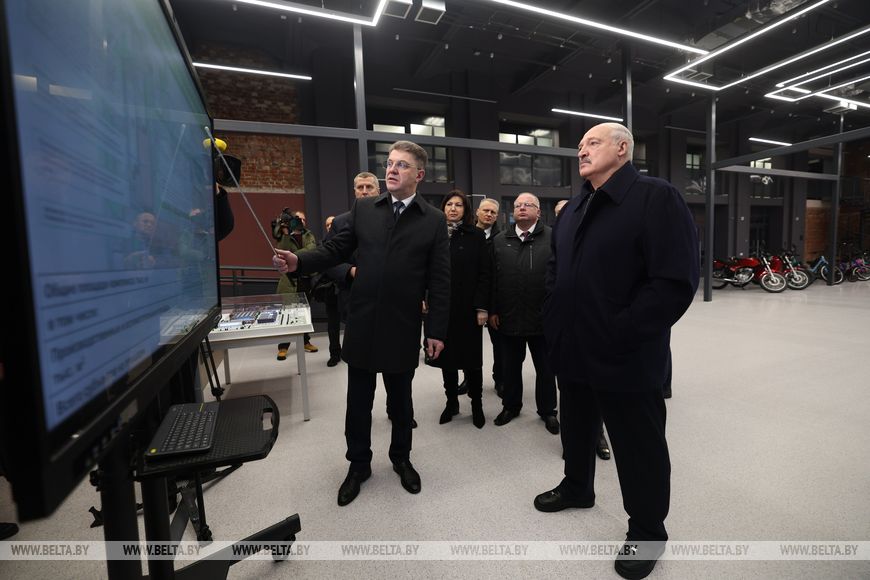
“Localization is a key task for us. This is not just a matter of reputation. Back in the Soviet times we made tractors, MAZ vehicles, motorcycles. We decided to build on the competences that we already had, that we inherited from previous generations. We needed not only to preserve, but also to develop, upgrade production. We went this way. And the motorcycle and bicycle plant was in the list of assets that we needed to preserve. We need to develop what we can do and what has already been done. And we know how to do it,” Aleksandr Lukashenko said during the visit to the MotoVelo plant in January 2025.
The president has repeatedly emphasized: it is important to retain both the brand and the competences. Some employees of the plant have been working here for decades. The older generation passes on experience to young employees. Nikita Ulasin joined the team three years ago as part of the mandatory first job placement program. And he stayed. At first he was a welder. When robotic complexes were installed, the young man started writing programs for high-tech equipment. He enjoys this work and says this is akin to programming.
“A robotic system consists of a robot and a rotating table. That’s it. The main task is to weld parts fast and do it qualitatively. It replaces a number of procedures performed by several people,” operator Nikita Ulasin said.
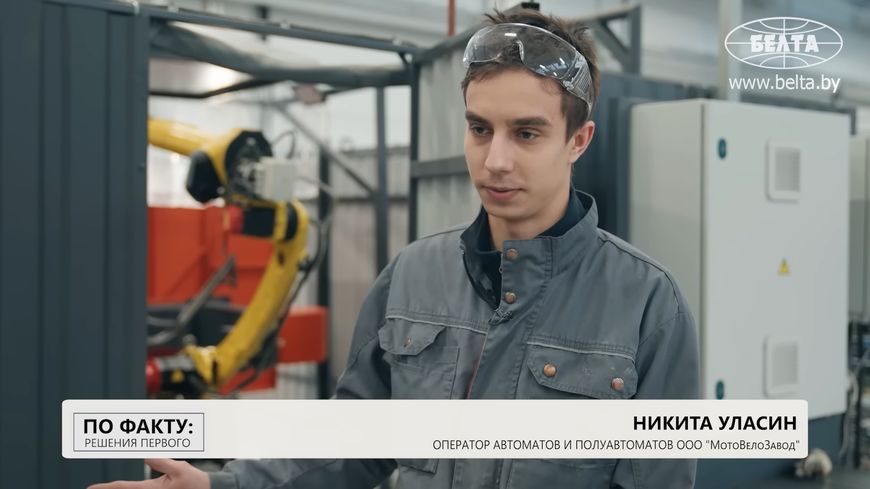
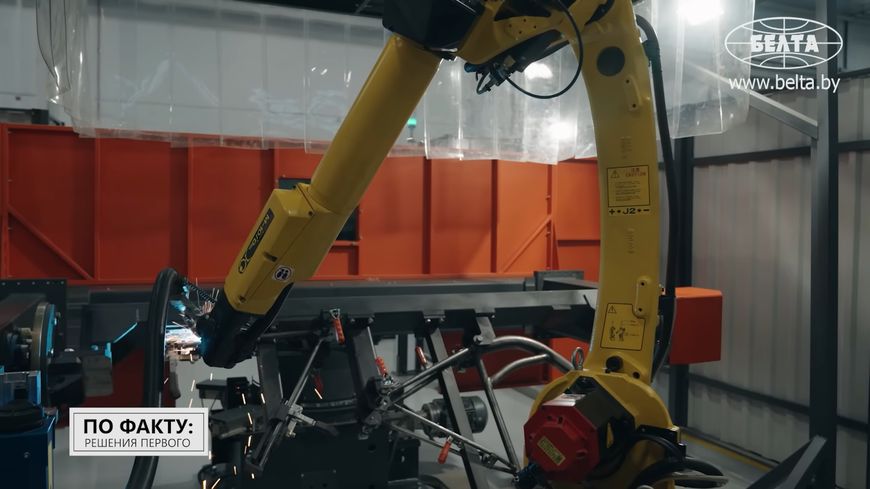
How many bicycles and motorcycles the plant produces per month
The factory produces about 600 motorcycles and 6,000 bicycles per month. 36% of the output is exported. Mostly to Russia. The Home-Made Goods loan program helped promote two-wheeled vehicles in the domestic market. Products of Belarusian manufacturers can be acquired using a three-year loan with a fixed rate of 4%.
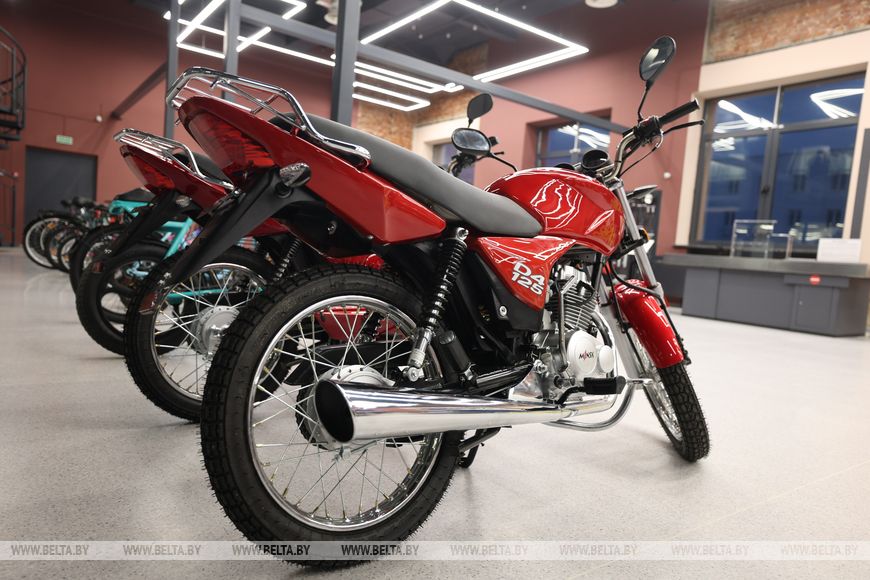
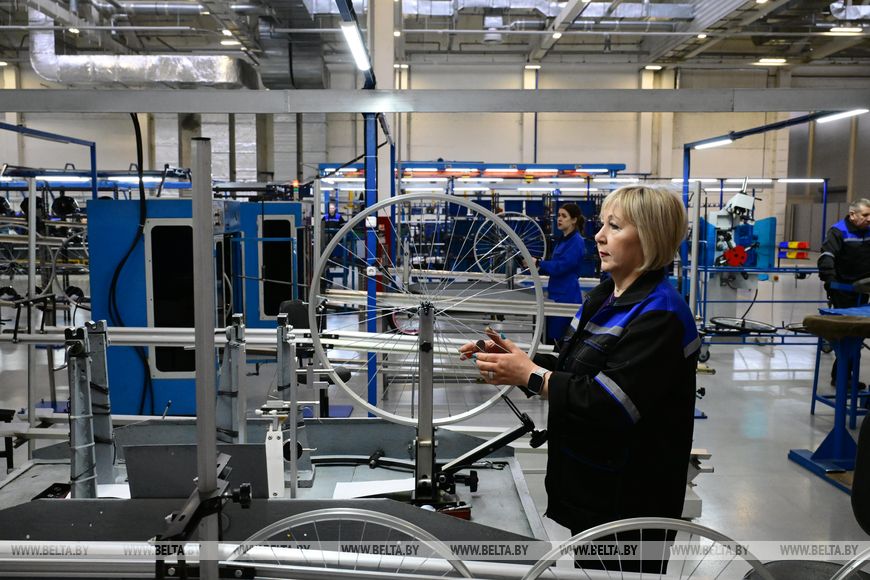
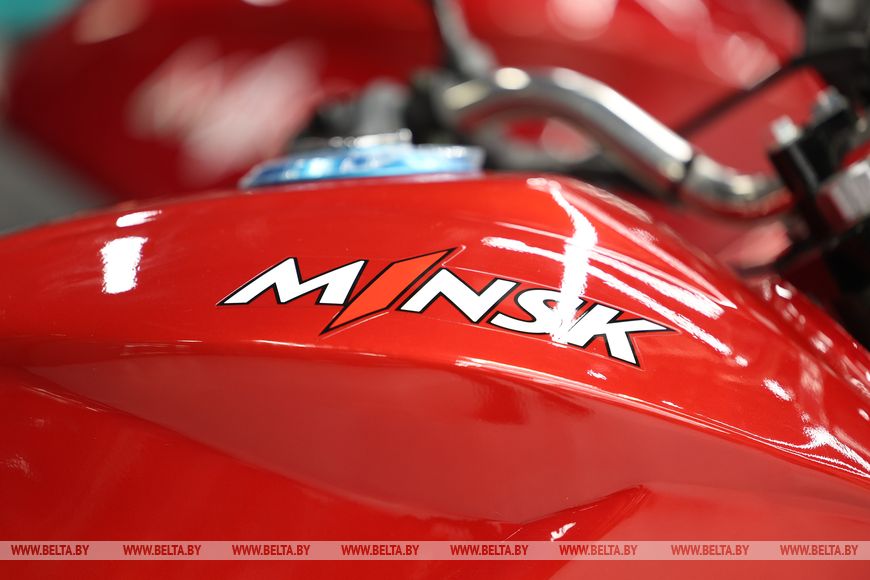
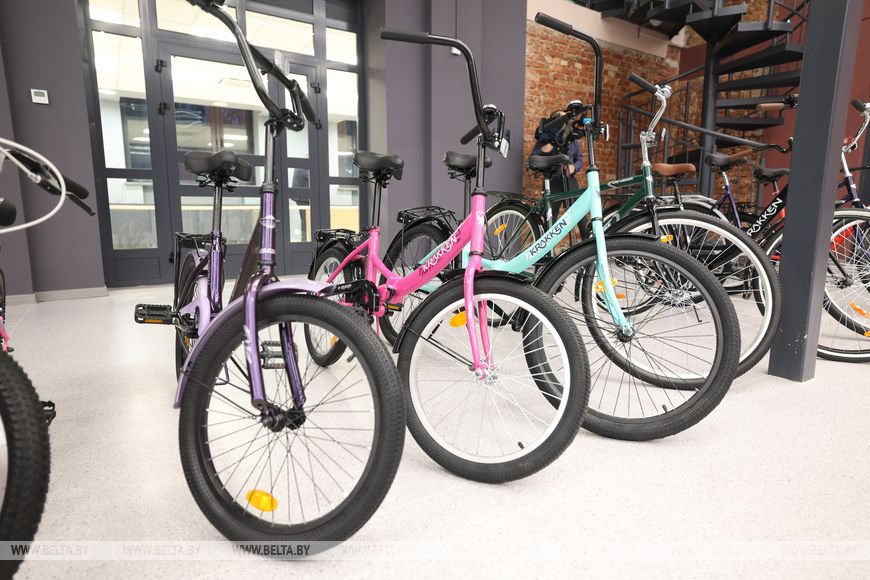
Aleksandr Lukashenko has been seen riding a motorcycle more than once. For example, the president rode a Harley-Davidson during an international biker festival in 2016. Riding an Ural with a sidecar and a flashing beacon, the head of state joined the celebrations of the 85th anniversary of the Belarusian traffic police. Perhaps, we will soon see the president riding the Minsk motorcycle.
The MotoVelo staff thanked the president for the development and preservation of the enterprise during a meeting at Minsk City Technopark. “We know how you feel about our national brands Minsk and Aist. We would like to present you - the first President of the Republic of Belarus - with the first Minsk motorcycle which rolled off our new modernized line,” a representative of the plant said.
Aleksandr Lukashenko thanked the plant’s staff for the gift and jokingly noted: “I give all my gifts to the state, but I will keep the motorcycle for myself. At least until the spring. I will take a photo on it in the spring. Pul Pervogo [Telegram channel] will post it. I have other motorcycles, but this will be the most cherished one. I am very grateful to you. Thank you!”

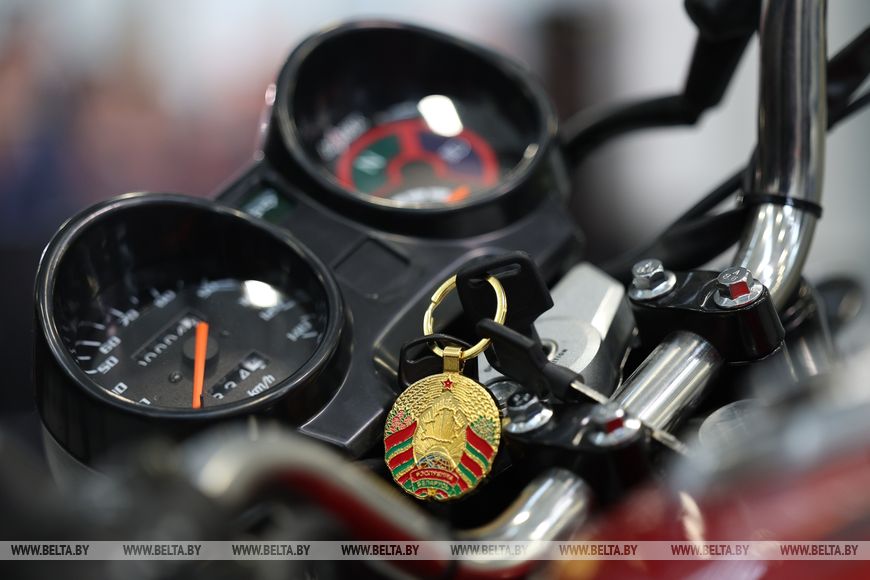
What preferences technopark residents have
The reconstructed site of the technopark is home to 140 resident companies. All the premises are occupied. Even the buildings, which are not yet ready to welcome production facilities, have been booked. During his visit to the technopark this year, Aleksandr Lukashenko got familiar with the operation of a number of private companies.
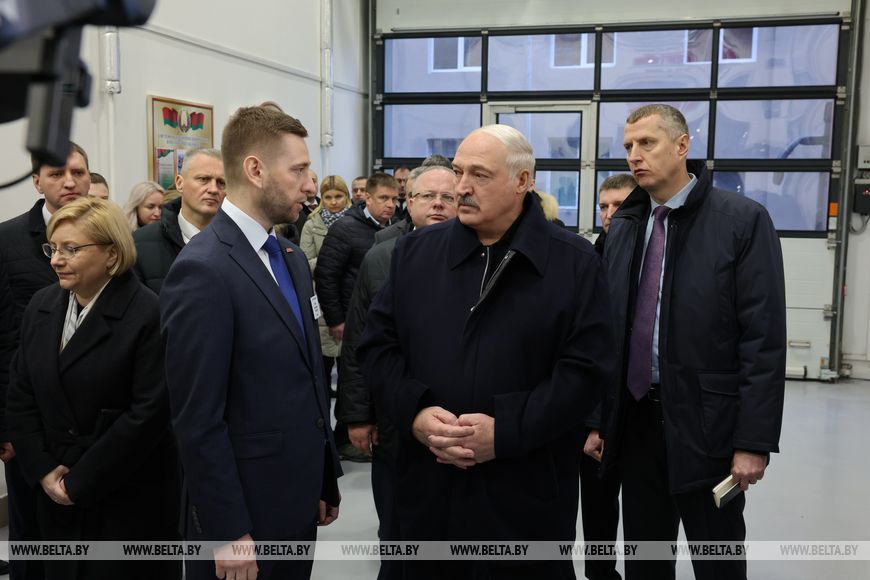
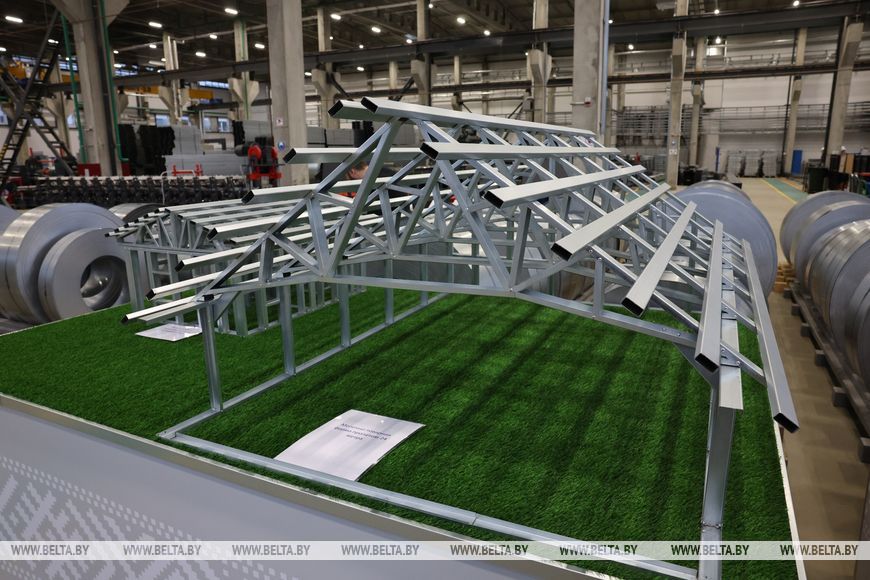
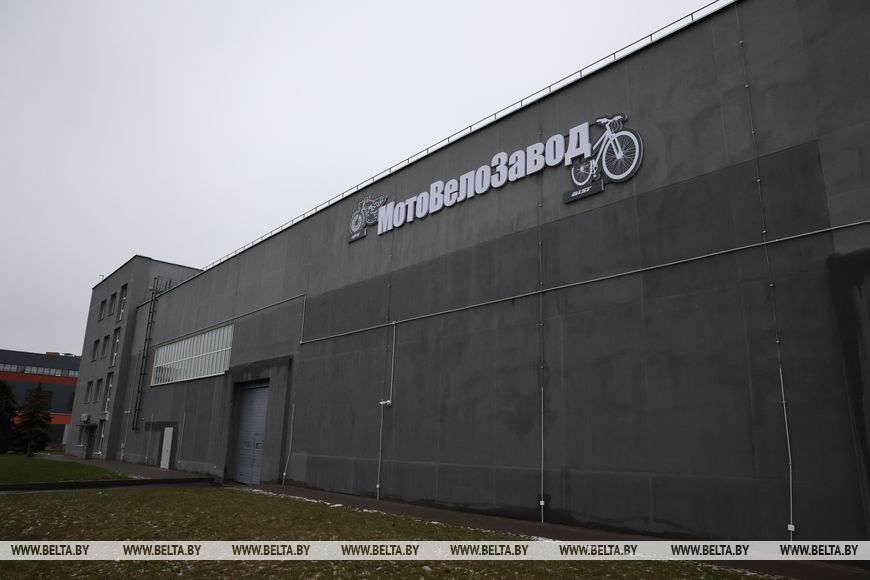
“Residency in the technopark provides some rent privileges. This also gives financial benefits in the form of tax preferences. Residency in the technopark let us scale up in a relatively short period of time. We started with 600 m2. Today our total production area is 1,800 m2. Expansion within the technopark gave us the opportunity to structure our production, to zone it by production sites,” Deputy Director of GlobalProdService Aleksandr Kushnir said.
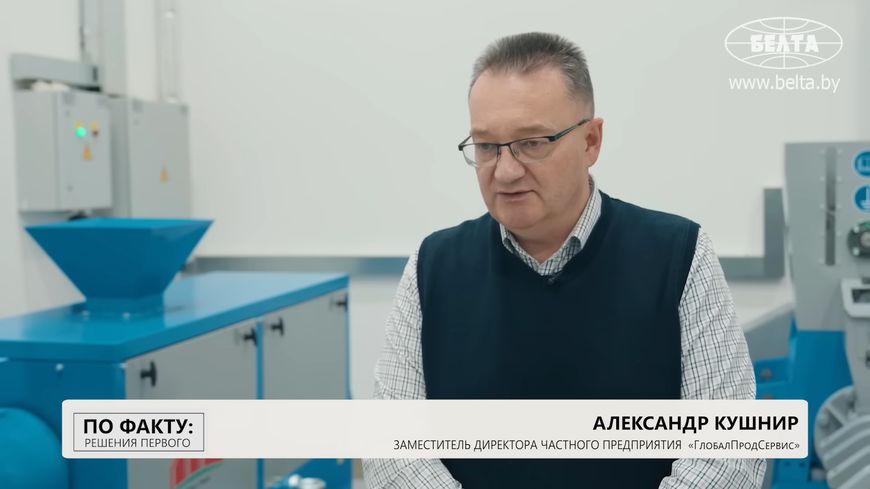
For example, for GlobalProdService it is important to locate production facilities in the city center and have a possibility to scale up within one location. The company produces equipment for processing oil crops. Belarus has never produced such equipment before. We had to import everything we needed. Today Belarus can supply such equipment abroad.
“The Minsk city administration is mulling over some five technoparks in Minsk. We will be gradually setting up similar technoparks. At the Horizont plant, as we used to call it, we will develop appropriate high-tech production. There will be less iron and more technology,” the president said during his visit to Minsk City Technopark in January 2025.


